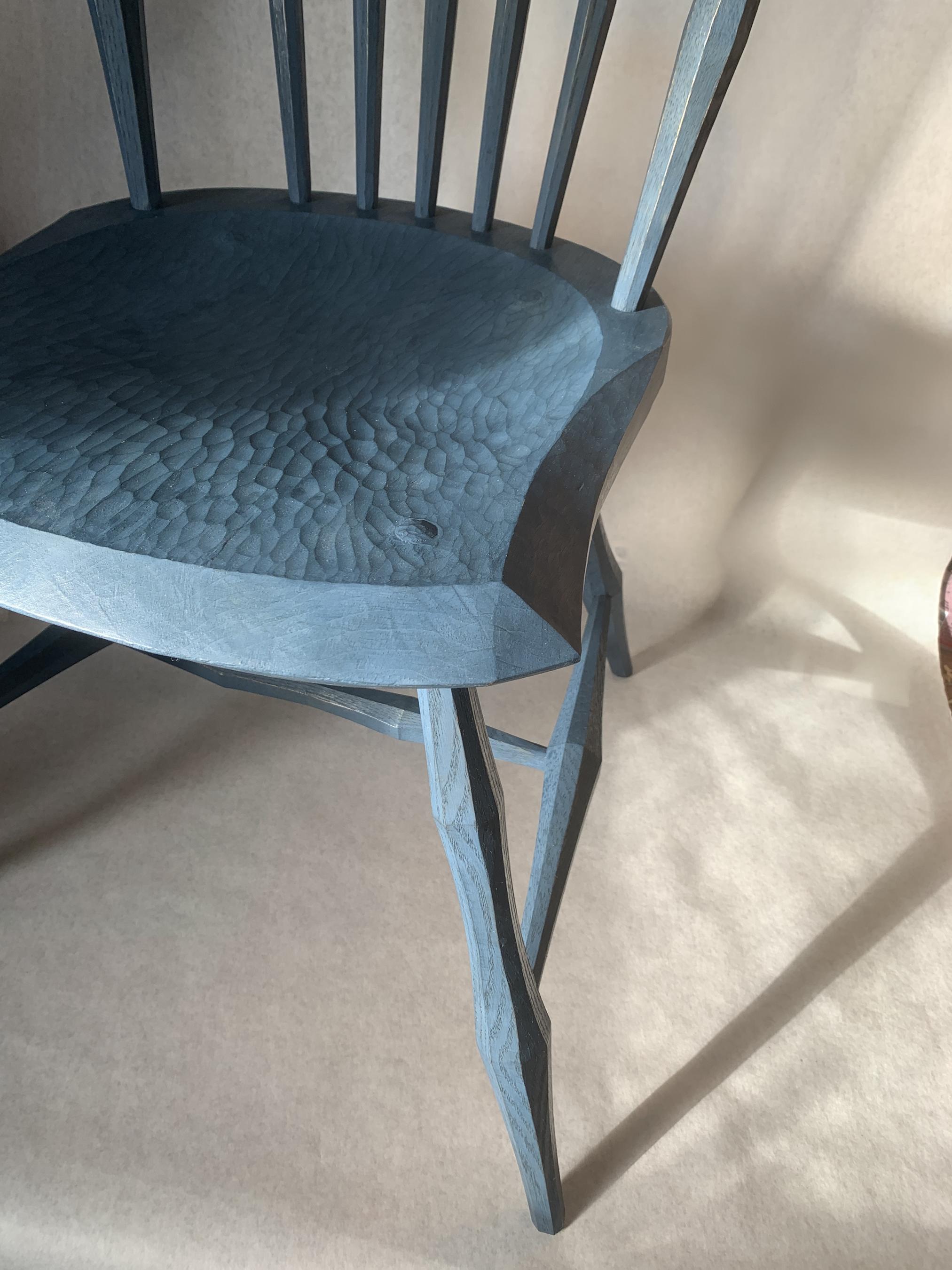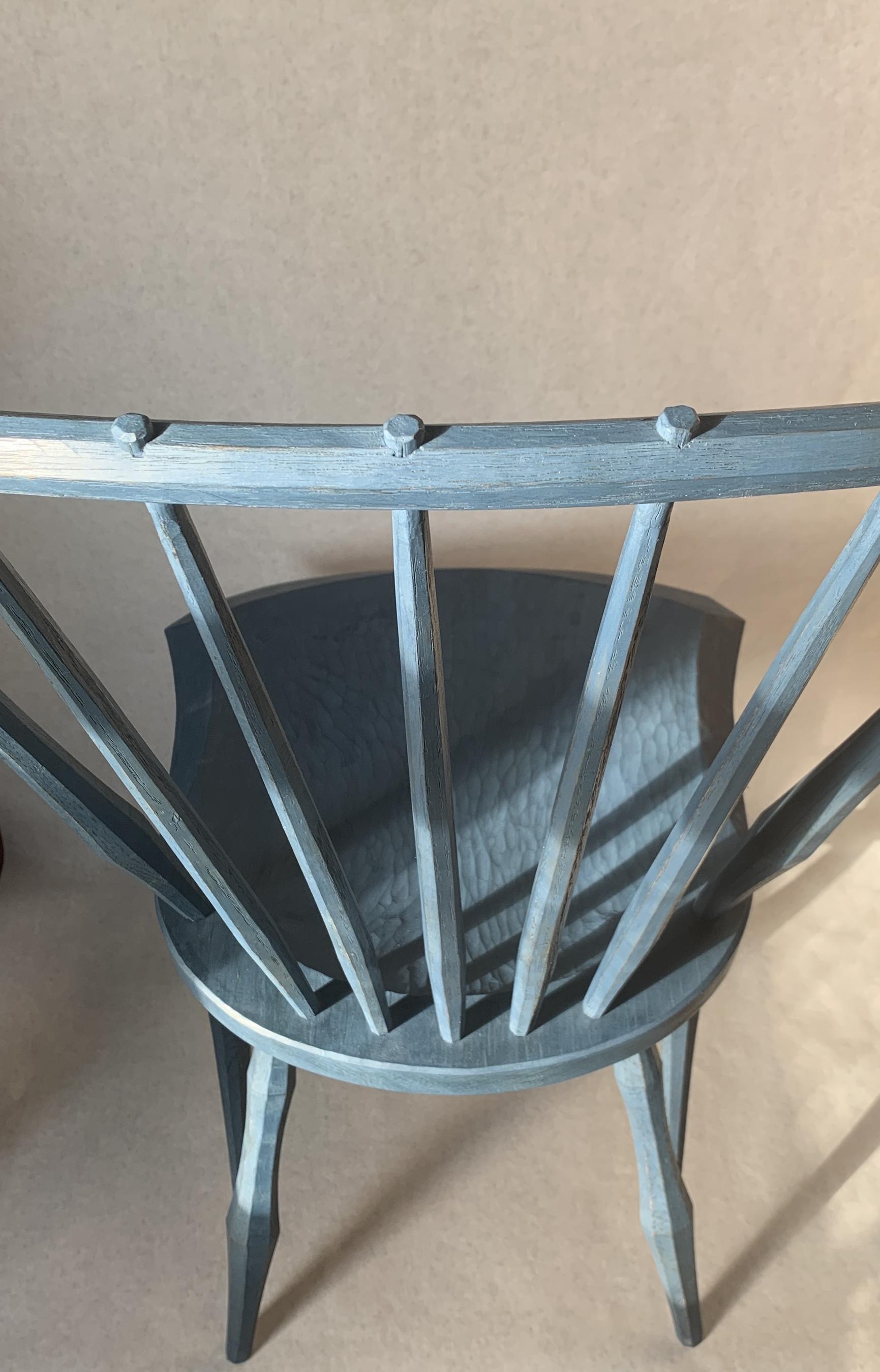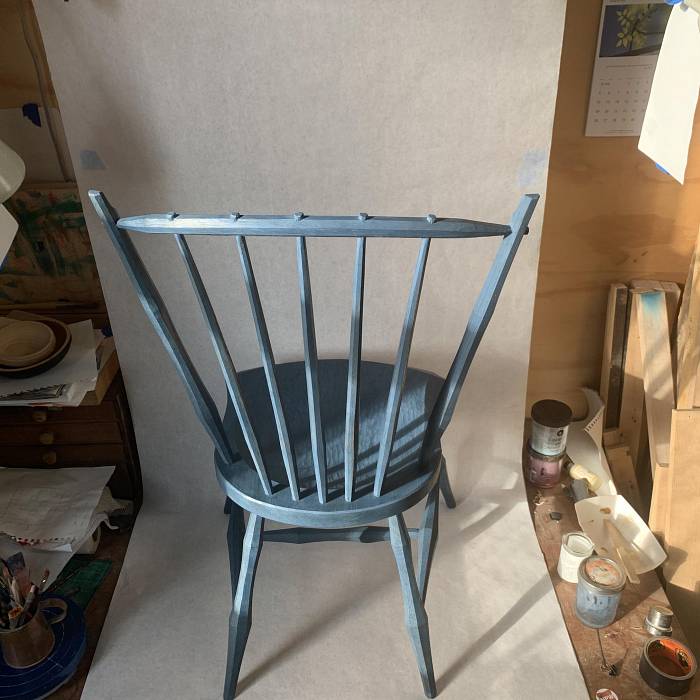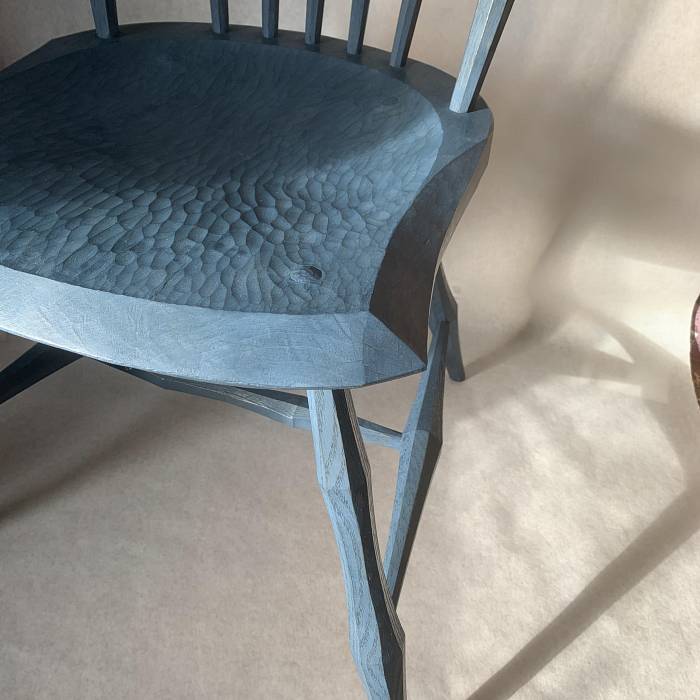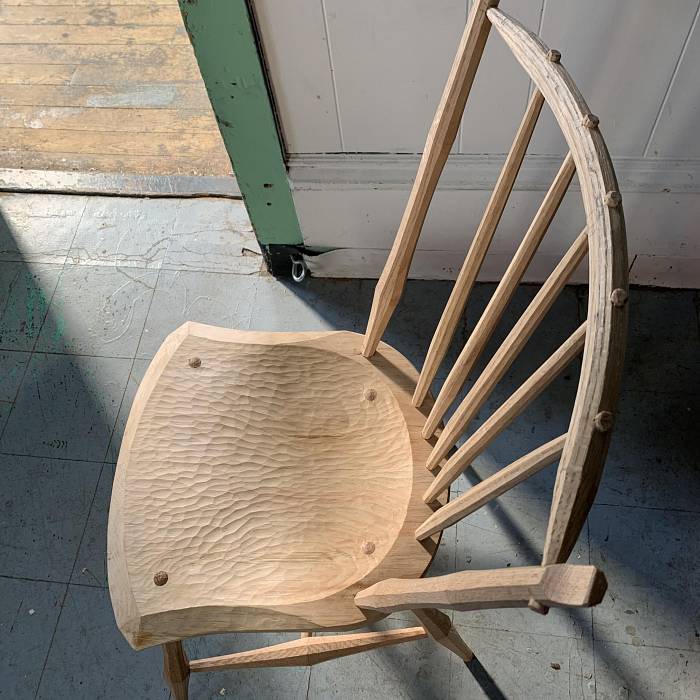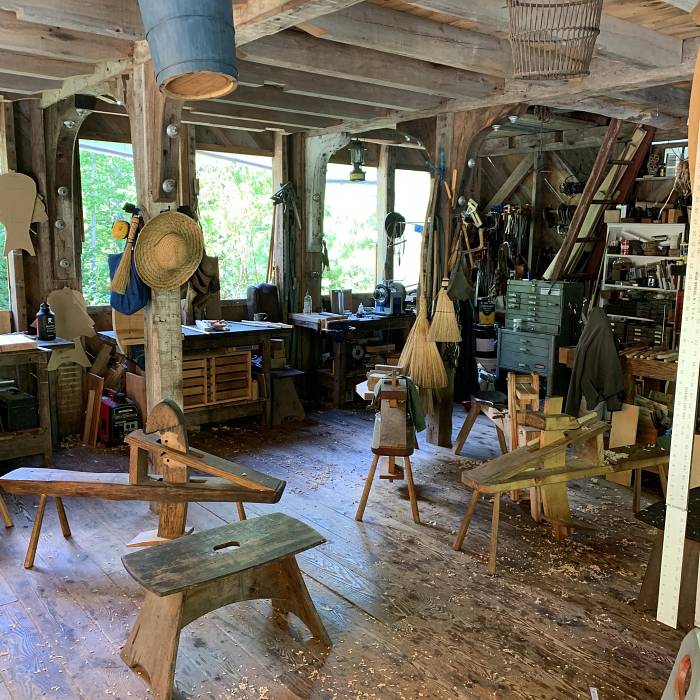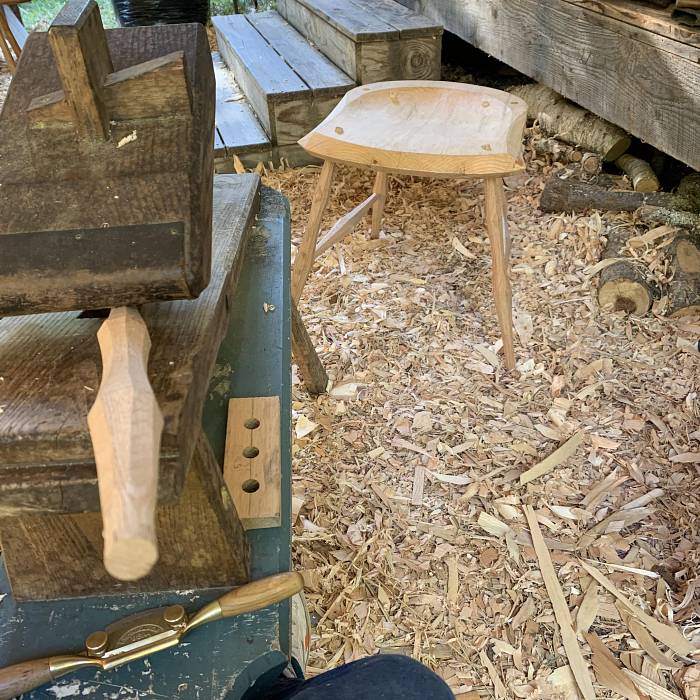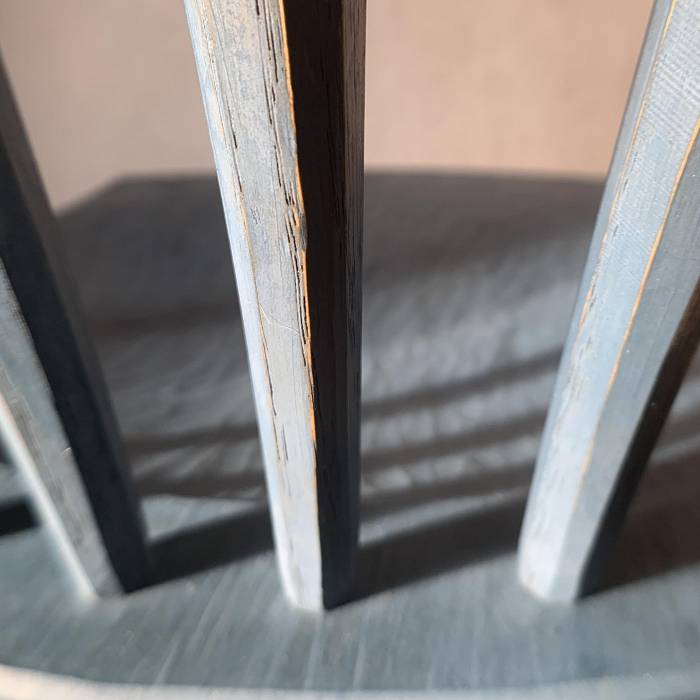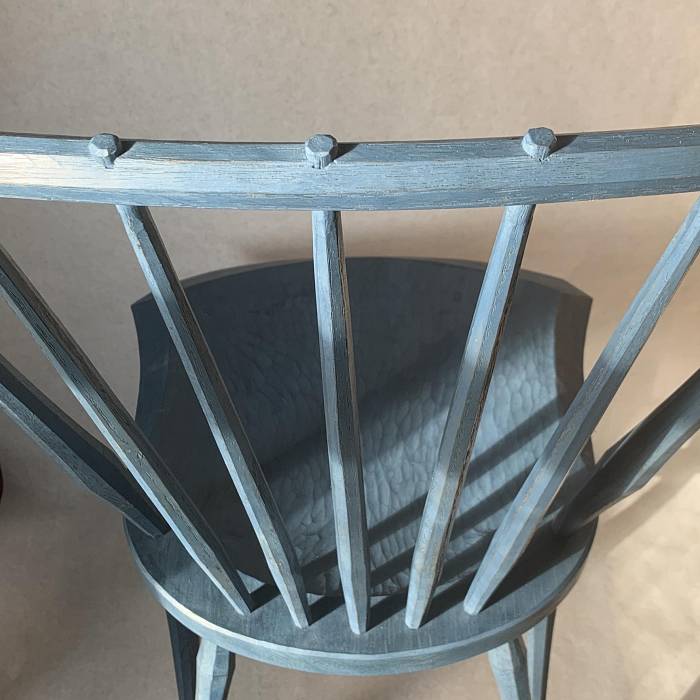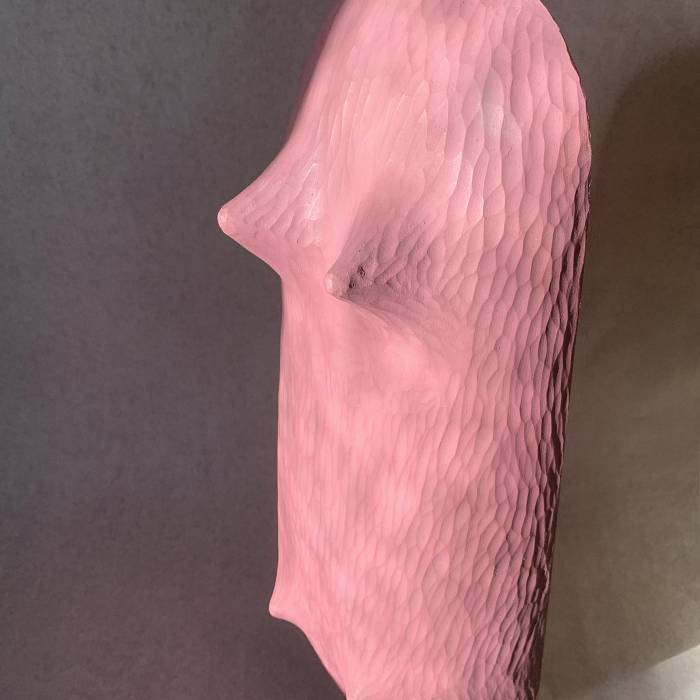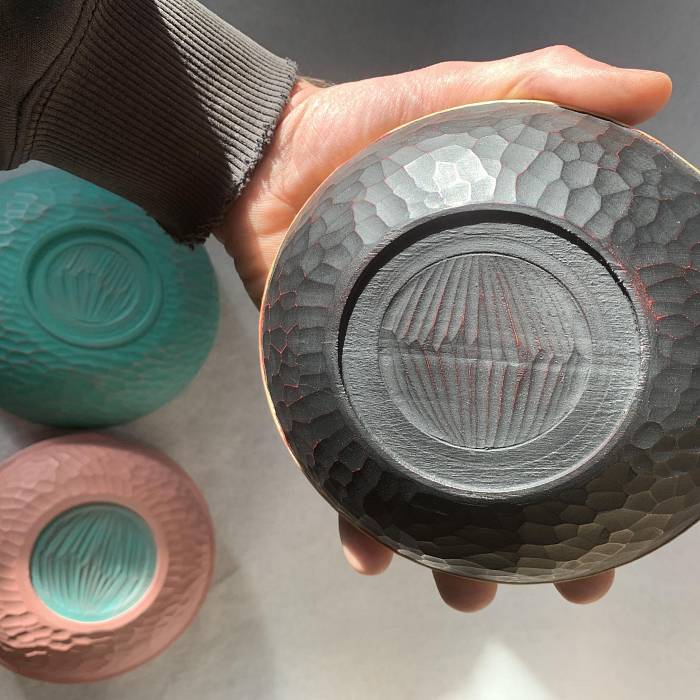
A Multitude of Subtleties
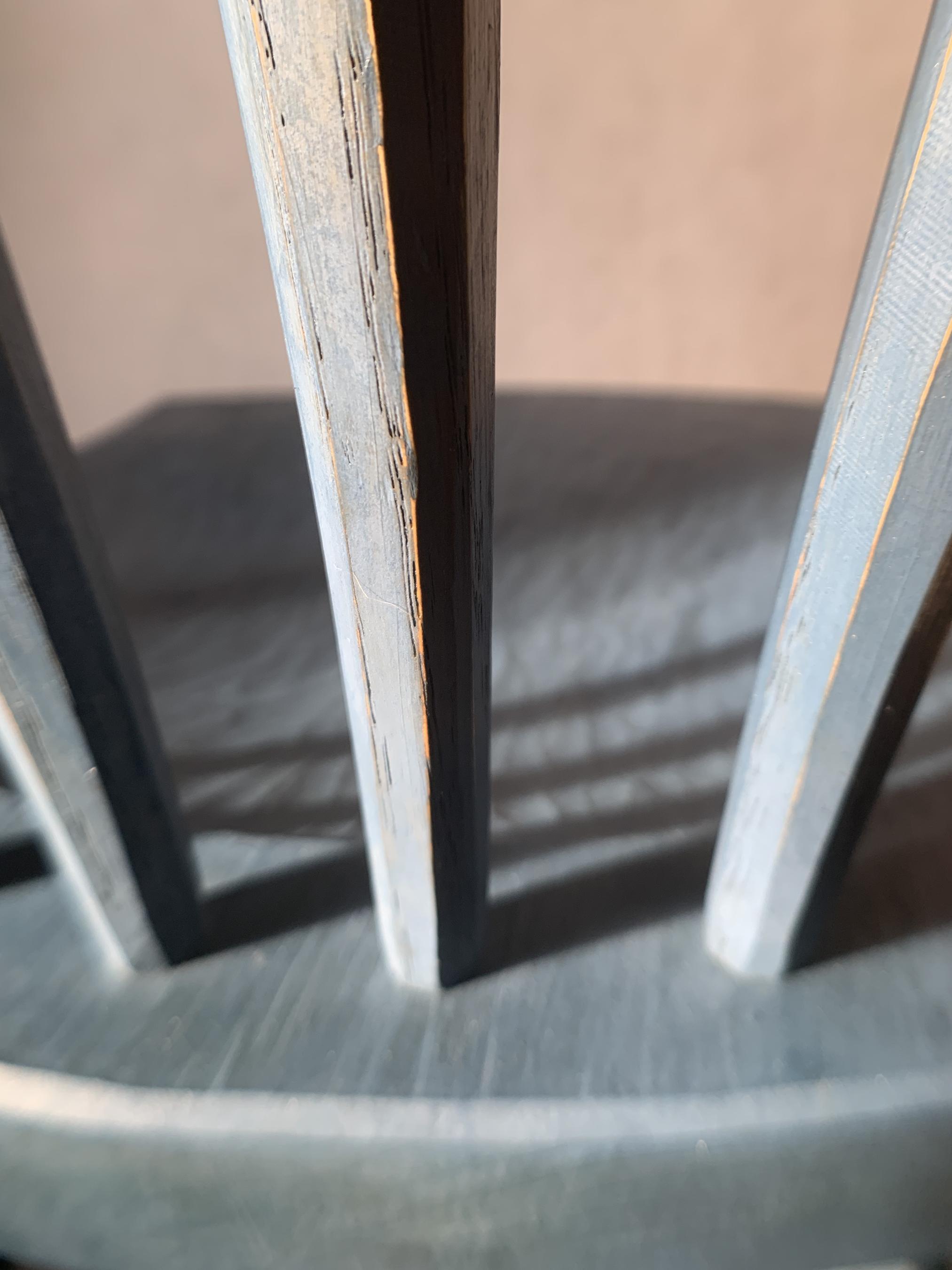
Resident Artisan Nate White recounts making a "democratic" chair. Using a minimum of hand tools reduces the barriers to learning and practicing a craft, making it more accessible for everyone.
Recently I got back from a trip in Maine where I was taking a class with my friend and mentor Kenneth Kortemeier. Kenneth was teaching the Democratic Windsor Chair, a class he offers at the Maine Coast Craft School, which he and his wife Angela started a few years ago. In the class we made a Windsor side chair using almost entirely hand tools, with a lot of focus on the draw knife. The chair itself was designed by Curtis Buchanan, a very talented chair-maker who resides in Tennessee. Curtis wanted chair-making to be more accessible to a broader range of people, and one part of achieving that goal is to reduce the amount machines and even hand tools and needed to create the individual pieces which make up the chair; thus focusing on using mostly a draw knife and scorp, as opposed to using/needing a block plane, spoke shave, travisher, etc. Being a wooden chair made almost entirely of hands tools, the chair is alive with the minutiae of its process.
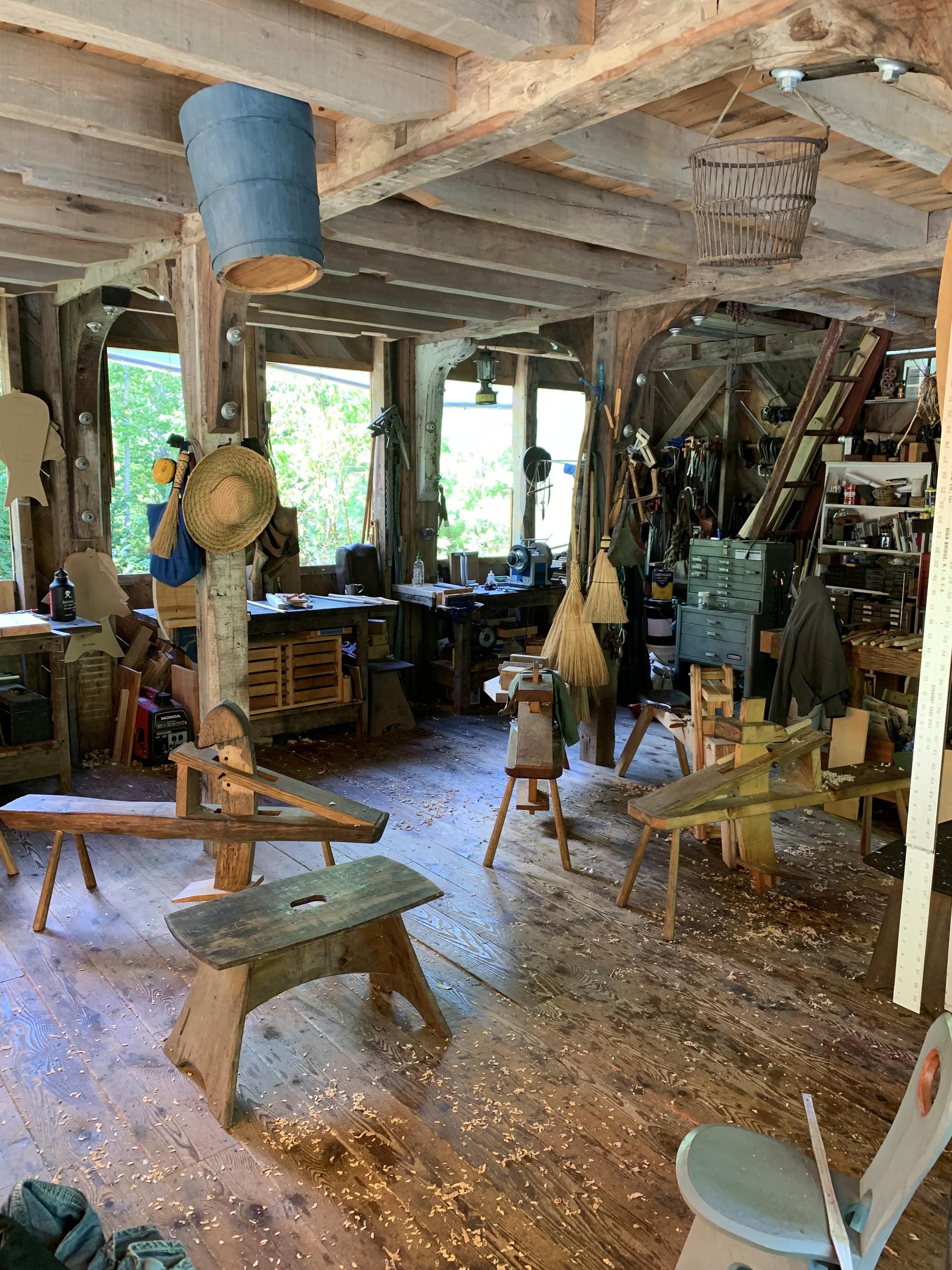
Kenneth has made quite a few of these chairs at this point, and a number of them are around their dinner table, and in his workshop. Its a simple and elegant chair, easily taken for granted, but after first glance and once inspected, one can see the many little details that go into making this chair quite beautiful.

Essentially, all of the pieces, besides the seat, are octagonalized, and have multiple tapers in each piece. This means the chair is chock full of facets, and those facets do a really great job of catching light. When that chair is awash in some golden-hour sunshine, you'll also notice the contrasting color of the base coat of milk paint coming out from underneath the top coat on the corners of those facets. This is a common practice in chair making, and also something I like to do on virtually every bowl, or piece of furniture that I end up painting; a contrasting color underneath the top coat color. There are some classic combinations, my favorite being a red base coat with black top coat. Once the paint is dry, it gets burnished, which is the act of abrading and polishing the top coat with very fine steel wool, and gives the surface with a slight sheen.
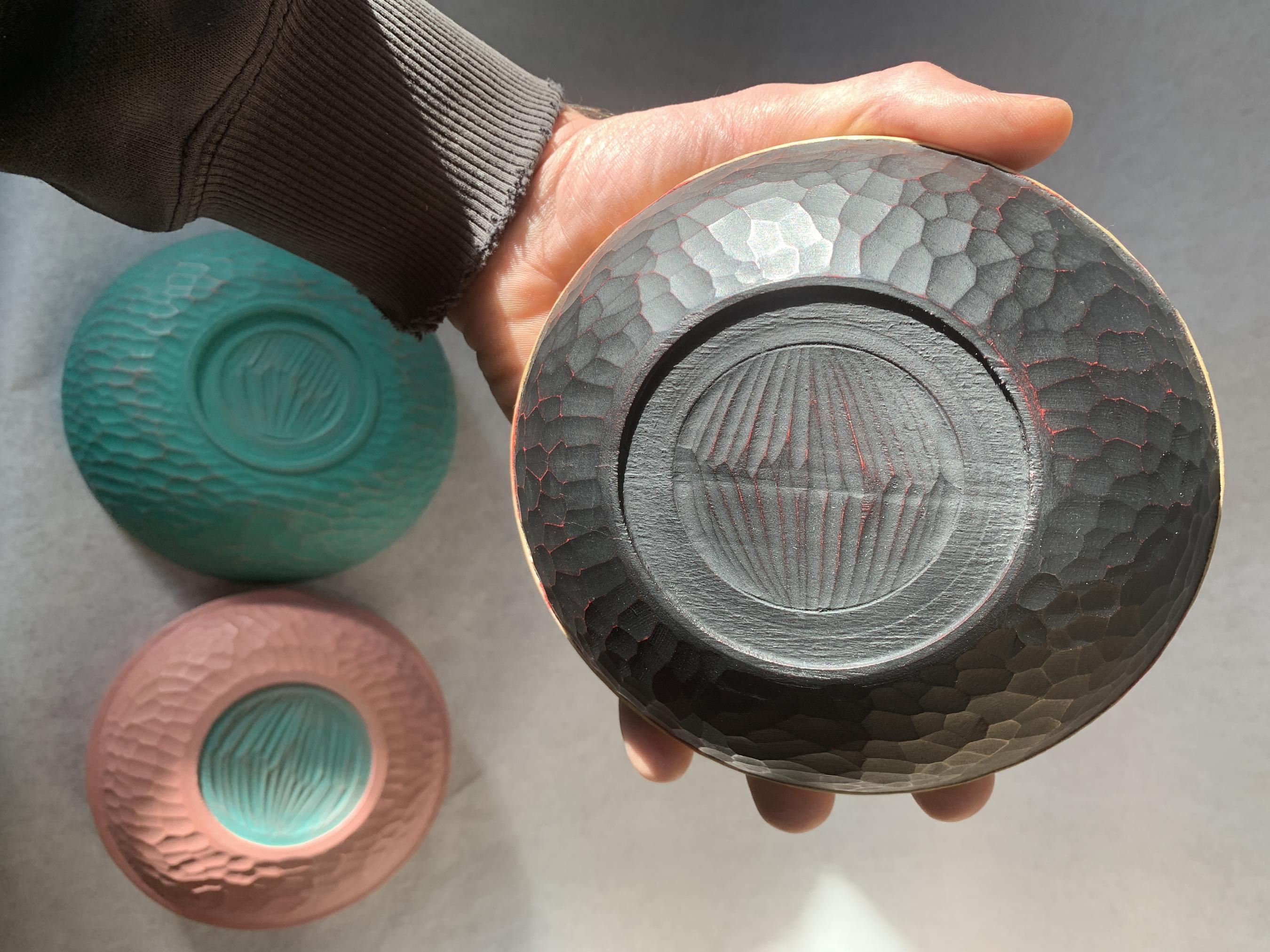
The reason for doing this detail, for me, is twofold: a.) as the chair ages and wears [and also through burnishing], the base coat will come through and add some decorative flair, and b.) depending on what the base color is, it will either add "warmth" or "coolness" to the top coat. That is getting into color theory, which isn't something I can really expound upon more, other than saying, colors you might intuitively think of as warm add warmth, and colors you intuitively think of as cold add... coolness.
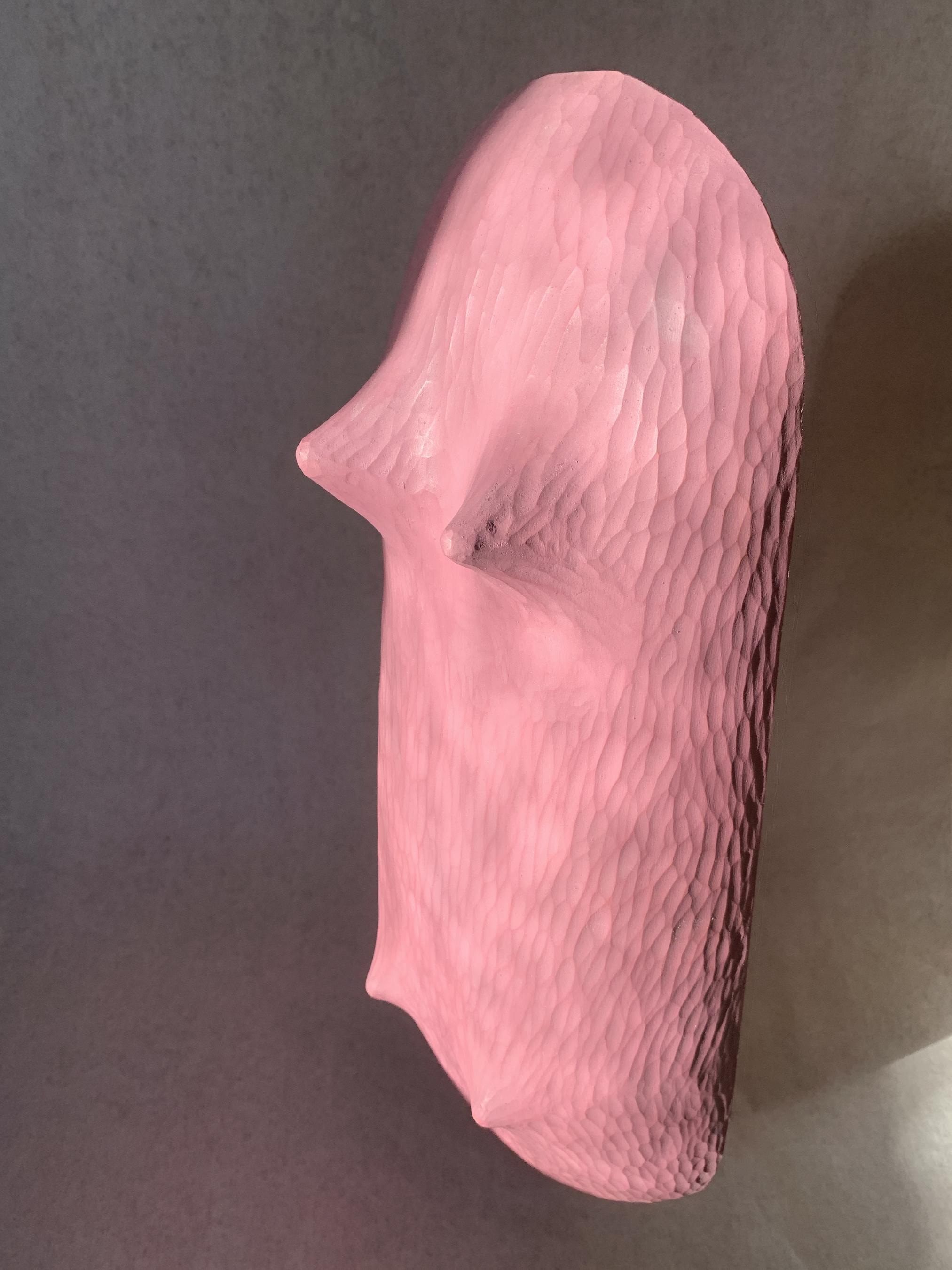
This bowl has a goldenrod base coat, which made the lavender top coat lighter and warmer.
Besides adding color to the chair, milk paint also contains lime, which can give wooden objects painted with it an added tactile feature that is almost ceramic. Add a proper four to six coats of tung oil to it after the milk paint is dried and burnished, and this thing is a complex combination of shape, color, and natural materials, that make it more than just the chair one might assume it is at first glance.
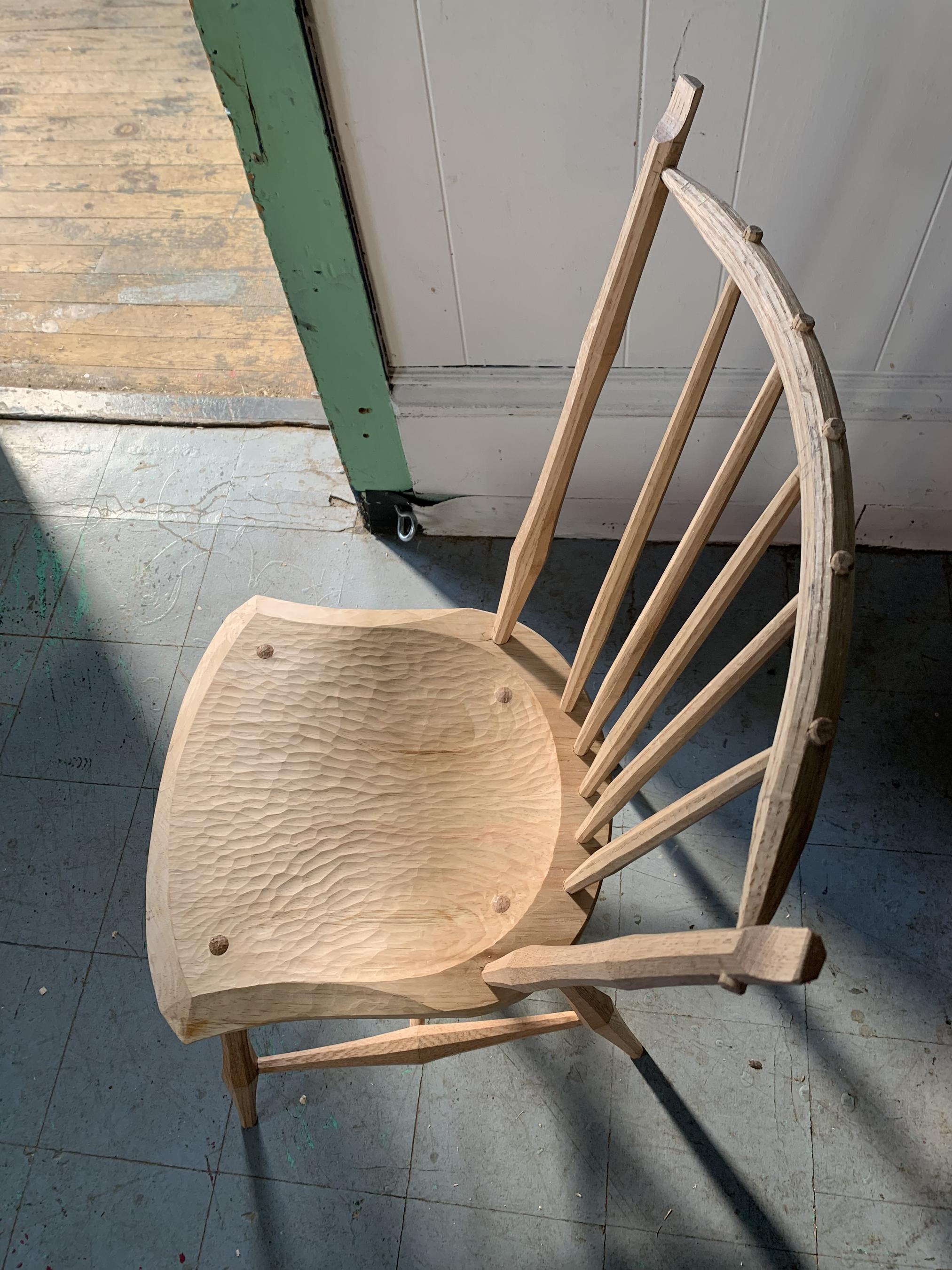
Most well made objects of art/craft are laden with these tiny details that may only ever be known to the person who made it, but I feel like people who really treasure an item are well aware of all the little things that add up to be something like their favorite mug, or shoes. As a crafts-person, its always a great joy when someone takes time to notice these characteristics. Be it a basket, a spoon, a broom, or a chair, they all contain a multitude of subtleties that make them truly unique and invaluable.

